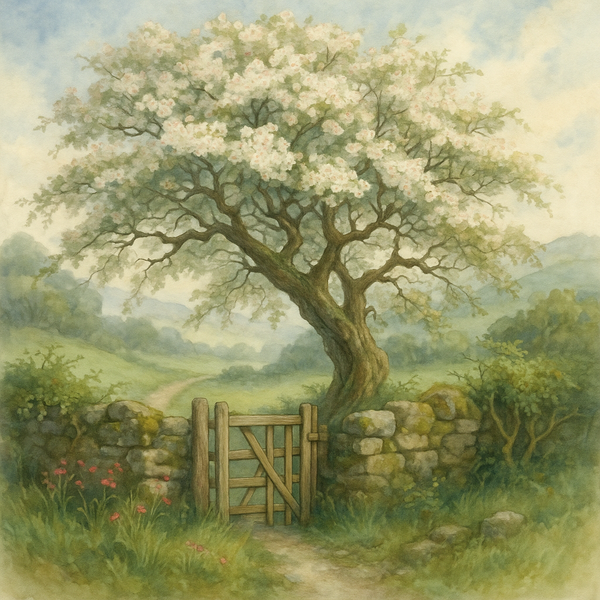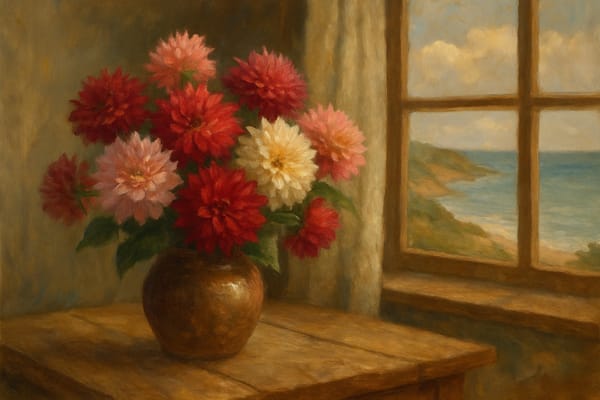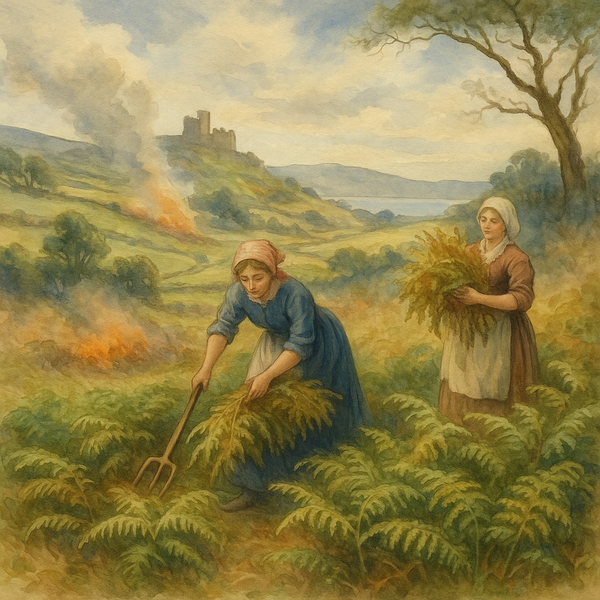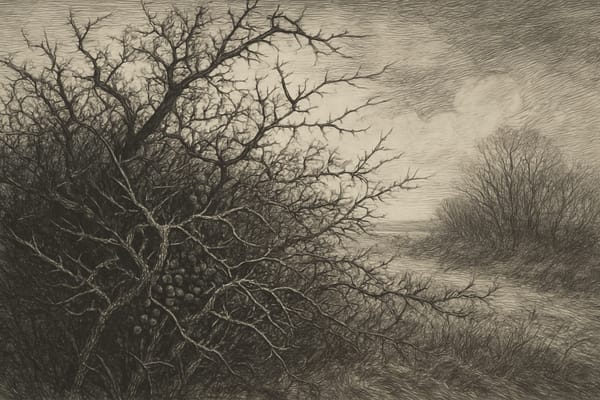There are trees in Cornwall you pass with a quiet nod — a lone hawthorn standing at a crossroads, a gnarled branch reaching over an old hedge. They seem almost to watch you. And perhaps, in the old stories, they do.
Hawthorn (Crataegus monogyna), known for its white blossom and blood-red haws, holds a place in Cornish folklore that is both protective and perilous. More than a hedgerow plant or boundary marker, it is — and always has been — a tree of unseen borders, woven into the fabric of magic, mystery, and the land itself.
A Tree of the Fae and the Sacred Edge
In Cornish tradition, hawthorn is a faerie tree, a living threshold between worlds. Folklore warns against cutting a lone hawthorn, especially one that stands alone on a hill, by a gate, or at a crossroads. To harm it was to risk angering the spirits — or worse, drawing down misfortune. These trees were said to mark the places where the veil between worlds thins, guardians of ancient paths and sacred ground.
Offerings were quietly left beneath their boughs — a coin, a ribbon, a whispered wish — gestures seeking favour or protection from the unseen.
Hawthorn and the Maytime of Renewal
With spring, hawthorn bursts into bloom, crowning the hedgerows with frothy white. In Cornwall, its flowering marked the true turning of the year. Blossoms were woven into May Day garlands and crowned the Maypole, symbols of fertility, life, and the long days to come.
But even in celebration, there were limits. Bringing hawthorn indoors was a grave misstep — the scent, some said, carried the breath of death or the whisper of the otherworld. It was a tree to be honoured outside, in its rightful place, not caged within walls.
The Boundary Keeper
Hawthorn shaped the Cornish landscape in practical ways too. Its dense, thorny growth made it the perfect living fence, sheltering crops and marking the edges of fields. But even these everyday hedges carried layers of meaning. To plant a hawthorn hedge was not just to protect a field — it was to invoke the tree’s age-old role as a keeper of boundaries, both seen and unseen.
In the mining districts, hawthorns sometimes marked the course of lodes beneath the earth — a quiet nod to its status as a guardian even of the hidden seams that shaped Cornwall’s history.
Taboos, Traditions, and the Weight of Story
So deeply did the respect for hawthorn run that taboos became woven into daily life. Cutting its branches in bloom risked inviting sickness or bad luck. Children were warned — hawthorn was no plaything. Yet its presence brought comfort: a natural talisman warding off lightning, witchcraft, and ill fortune.
In folk medicine, its berries were prized for heart remedies; its flowers, brewed in teas. Even here, a sense of reverence lingered, as though the tree’s gifts were to be accepted humbly, not taken lightly.
Hawthorn’s Living Legacy in Modern Cornwall
Today, hawthorn remains a symbol of Cornwall’s living heritage. Lone trees are often spared when fields are cleared — whether by tradition, superstition, or a quiet respect for the stories that linger in the land. In hedgerow restoration and wildlife planting, hawthorn stands as both ecological asset and cultural heirloom.
Community rewilding projects draw on its folklore to engage hearts as well as hands. May Day festivals revive its joyful symbolism, while lone trees become landmarks of local identity — not just plants, but storytellers in their own right.











